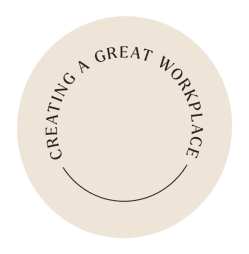Answering your Questions on Leadership Onboarding, Communication Mastery, and Culture Metrics
Curiosity and active listening was paramount for me as a leader of people at Southwest Airlines, and it is still my priority through Unstoppable Cultures. That’s why I love hearing from my LinkedIn connections about the topics that are important to them, what is working, and where they could use extra support or an outside perspective. For this month’s newsletter, I wanted to do something special and discuss a few topics that were on YOUR hearts and minds.
I opened it up to my LinkedIn connections to learn what you wanted to know as it relates to culture, and was excited by the response. From leadership onboarding best practices and how to improve executive communication, to measuring ROI on culture, I loved how your questions spanned the leadership experience from “day one” to reporting on the data and I was excited to dive in. Keep reading to learn what your fellow Unstoppable Cultures are asking, and a few suggestions I recommend considering.
———————————
Q: How can you prepare for a new CEO? What Best Practices do you recommend to shape the first 120 Days?
A: “If you fail to plan, you are planning to fail!” – Benjamin Franklin.
When it comes to preparing for a new CEO, building a plan for the first 120 days could not be more crucial. Ask yourself not only what they need to be trained in or accomplish to succeed in a role, but also who they need to meet, how they can be integrated into the company, and how they can build rapport and connection. All of this (and more!) needs to be taken into account when planning for a new CEO’s first few months at a company and baked into an onboarding plan. Here are a few tips I always suggest keeping in mind:
- Before you start scheduling meetings and introducing new leadership to everyone in the office, take time to understand the CEO. It is essential to understand her or his communication style, social stamina, strengths and preferences to help tailor and pace the onboarding process. Becoming a new executive can put leaders in the spotlight and be a very social job – so be sure they are equipped and ready to shake hands, snap a fun selfie, or meet an excited client, and that they have the support needed to do so.
- As you better get to know the CEO’s personality, be sure to engage all stakeholders so that everyone within the company has a chance to see them as a whole person and feel connected to the transition. The ultimate goal during this period is to introduce the new CEO to as many people within the organization as possible. Prioritize employees, but don’t forget about other important audiences, like customers or partners. I currently serve as the Global Board Chair for Ronald McDonald House Charities and have a great example of this from our newly onboarded President and CEO, Katie Fizgerald! Immediately upon starting there were already a series of meetings scheduled that gave her an opportunity to go meet all the key stakeholders in North and South America, Europe and Asia Pacific. Talk about an introduction! When starting out, those kinds of face to face meetings are crucial.
- Calendars can be tricky, so be sure to leverage all communication channels when it comes to introducing your CEO to stakeholders. Schedule a Zoom call to introduce the CEO to your clients in London, or put a lunch meeting on the calendar so he or she can meet your company’s partner across town, encourage them to send a simple “hello” email to the fully-remote customer relations team. Have a diverse set of communication tools and time set aside so that connection is the priority.
- It can be overwhelming to know what to say, and no one can expect to become an expert overnight. Help support your new CEO eat, breathe, and live the company values and goals by planning messages that align with each venue and interaction. You can even offer coaching and prep time to ensure that he or she communicates a clear and consistent narrative that is consistent with the heart of the organization.
- When onboarding a CEO, allow for communication to be a two-way street, so you can understand how the organization is responding to the new addition. Early on, establish feedback mechanisms to gauge engagement and collect feedback from these initial interactions.
Remember, every CEO is unique, so tailoring your approach to their personality and the organization’s needs is paramount. The key is to foster connections and relationships during these crucial initial days.
———————————
Q: How do we train executives/leadership to break down their acronyms and translate them into relatable stories that help move people?
A: Communicating effectively is essential for leadership, especially in complex or highly regulated fields, like healthcare, for example. Whether they are brand new to the company like I described above, or they are tenured leaders who are struggling to connect, as culture leaders, we can help executives break down acronyms and transform technical jargon into relatable stories that move and inspire. Consider these strategies for improved communication:
- Just like it can be difficult for a fish to see the water that it is swimming in, it can be hard for people within the company to see things in a different light. If you know (or are) a leader that is struggling, consider engaging external coaches who specialize in message development and audience relatability. They can help leaders recognize when they slip into using acronyms or complex language and provide guidance on simplifying their communication.
- Sometimes overcoming a bad habit can be as simple as a fun little exercise. I like to encourage leaders to adopt a “start and stop” approach as they practice their presentations. Whenever they catch themselves falling into old habits, they have to stop and start mindfully again. For example, if they catch themselves using acronyms, overly technical language, or filler words, they have to pause and change the pattern: providing a simplified explanation or analogy for better understanding. This can be practiced in the office, at home, or even with friends!
- While it can be difficult to find at first, the sweet spot is usually in the balance. Leaders should aim to strike a balance between addressing technical experts who appreciate in-depth insights and those who need a simpler, layman’s explanation. This could look like presenting the technical aspect first and then providing an analogy, story or simplified version that can help unify audiences and meet in the middle.
It can be a dance to find your stride, but if you’re intentional about making the information accessible and relatable to a diverse audience, whether they are experts or newcomers to the field, you are well on your way to effective and inspiring communication.
———————————
Q: How do you measure ROI for Organizational Culture Initiatives?
A: Maybe you have rolled out a new initiative, onboarded new executives, or coached leadership to help improve your organization’s culture, but how do you know if it is working? Every company is different, and therefore will have different KPI’s, but I like to keep these key concepts in mind.
- What area of your organization needs attention? Where do you need to “stop the bleeding”? First and foremost, you need to establish clear objectives for your culture initiatives. Ask yourself what problem are you trying to solve or what improvements are you aiming to see. Be as specific and measurable as you can.
- Once you’ve defined your objectives, ask yourself what it looks like to move the needle. Determine the key performance indicators (KPIs) that will help you measure progress. This will be highly unique to your situation and could be anything from employee turnover rates to employee satisfaction scores, or even customer feedback. I love what JacLyn Pagnotta from Allied Partners had to say about this,
“When it comes to measuring the ROI of company culture, a stand-alone calculation can’t be used. However, combining several key performance indicators (KPIs) can. As high-performing culture is infectious, getting unintentionally integrated into every process, interaction, decision and action. Measuring engagement, unscheduled absenteeism, internal promotions, recruiting costs, retention rates and internal referrals are KPIs that can be combined to measure the ROI of your culture.”
How true that is! Before you make a move in your culture building initiatives, be sure to take stock of where you are right now so you can understand the current state or “baseline data,” and measure change and identify how far you have come.
- Take time to stop and listen. Be sure that you are implementing regular surveys and creating feedback channels to monitor the culture’s impact on employees and the organization. These can include employee engagement surveys, regular meetings, sentiment analysis of internal and external communications, and more.
In one example, Julie Hankins from NNIT measured the return on investment for their company culture by quantifying the actions of employees against the business outcomes. Going beyond annual surveys, she emphasized the importance of measuring employee participation and engagement across key moments, which creates real-time estimations. Leaders who are highly agile, attuned and plugged in can create a culture that fosters engagement. Even beyond the data, pause to ask yourself what the stories are telling. It is easy to miss things when relying only on hard numbers and qualitative assessments, and employee stories and anecdotes can provide valuable insights into the cultural impact.
ROI will vary greatly depending on the problems you are aiming to solve and the goals you have set out to achieve, but by defining clear metrics for success, monitoring growth and regularly assessing your approach, you can measure the impact of your culture initiatives one step at a time.
———————————
I love these questions! We all know that the journey to creating and sustaining an unstoppable organizational culture, and equipping unstoppable leaders, is an ongoing process. It’s about adapting, learning, growing, and meeting new challenges with an open mind.
As you embark on these initiatives and tackle the questions that arise, know that there is no single formula for success, but a commitment to continuous improvement and a willingness to connect with others for insights will guide you towards your goals. Keep the conversation going, keep sharing, and keep learning from each other to cultivate Unstoppable Cultures that drive your organizations to new heights.
Sincerely,
Ginger Hardage





